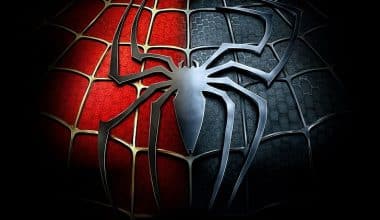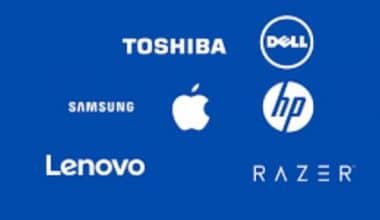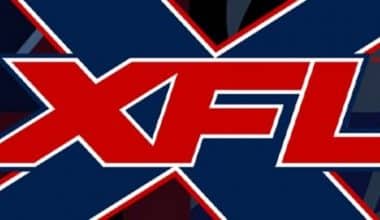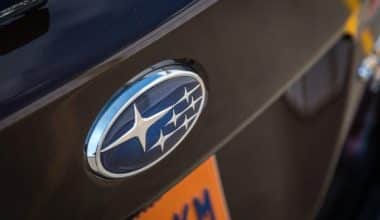This article looks at the history of the LA Chargers logo. Over the years, there have been numerous alterations to the Los Angeles Chargers logo. The Chargers’ first emblem, introduced in 1961, was much more complex than the straightforward lightning bolt they ultimately adopted. A white lightning bolt, a blue bronco’s head, and a powder blue and gold shield were all part of the original artwork. This served as the team’s logo up until 1974. Then, in 1974, a blue helmet with a gold lightning bolt across it was introduced.
Chargers Logo
The Los Angeles Chargers have experienced many ups and downs as well as twists and turns during the last 38 years. In this essay, we’ll look at the history of the Los Angeles Chargers and how their logo has changed over time.
Here is the most recent logo for the LA Chargers. Both the bolt and the color scheme underwent some changes.
The lightning bolt is a well-known representation of power and speed, making it the perfect choice for an NFL team’s logo. A lightning bolt also makes sense given that the franchise’s primary color is gold and that gold is frequently useful as a symbol.
To gain the support of the people when the Chargers relocated back to Los Angeles, they required a new logo. One strategy utilized to demonstrate the Chargers’ renewed commitment to Los Angeles and to win over potential non-Chargers fans of the area was changing the team’s emblem to reflect the name of their new home city.
The Chargers’ History
The Los Angeles Chargers have not spent most of their forty-eight-year existence in the City of Angels, despite being founded there and continuing to compete under that name.
Also, note that the Los Angeles Chargers were one of the seven new AFL teams that were founded in 1959. Los Angeles hosted the Chargers’ inaugural season in 1960. But for the following 47 years, it would be the Chargers’ inaugural and last season in Los Angeles. The Chargers moved to San Diego to play at Qualcomm Stadium after their inaugural season, and they changed their name to the San Diego Chargers.
However, Qualcomm Stadium had already started to fall behind the other NFL venues by the late 2000s. It was one of the older stadiums in the league and was getting on in age. One of the final stadiums in the league to be constructed as a multi-use facility rather than a stadium for a specific NFL club The Chargers needed a new stadium, according to owner Alex Spanos, in order to compete with the rest of the league in terms of ticket sales. So, in 2014, speculations of the Chargers returning to Los Angeles first surfaced.
Continuation of The Chargers’ History
The Chargers played their inaugural season at the brand-new StubHub Center Stadium in 2017 after relocating to Los Angeles in 2016.
The Chargers’ relocation to Los Angeles, albeit it was technically their return home, was not without controversy. After the St. Louis Rams moved there to become the Los Angeles Rams the previous season, Los Angeles had two NFL teams by the time the Chargers arrived. As a result, it was a demand for the Chargers to swear allegiance to their new city as soon as they got there. When the Chargers left San Diego after 47 seasons of service, the locals were understandably upset. The Los Angeles Times published an article titled “We. Don’t. Want. You.” to welcome the Chargers, proving that even the local press in Los Angeles was critical of the franchise.
The Chargers’ prior success, however, was unaffected by any of the recent bad headlines. The Chargers have made thirteen postseason appearances in their history. They participated in four AFC championship games, winning one of them to advance to the franchise’s lone Super Bowl in 1994, where they were defeated by the San Francisco 49ers of adjacent California. Three Hall of Famers, including illustrious running back Ladanian Tomlinson, are also members of the Chargers.
The Chargers Logo
The club changed the lightning bolt from black to white with a navy blue and gold border in 1988, giving the helmet a more contemporary, detailed appearance. The lightning bolt’s hue was altered to gold in 2007 along with a powder blue and navy blue border. In 2002, the logo underwent another alteration, but this time the helmet was gone and all that was left was the white lightning bolt with the navy blue and gold border.
The Chargers’ logo had its biggest redesign in recent memory when they relocated to Los Angeles. The white letters “LA” and a lightning bolt at the bottom of the letter “L” made up the new logo. After receiving a negative response, the logo was eventually altered back to its original, pre-Los Angeles form.
Chargers’ Logo’s Popularity
Despite the Chargers’ marketing department’s best efforts, neither the team’s name nor logo has particularly won over the Los Angeles population. Once the new logo was unveiled, supporters immediately pointed out a number of issues with it. The design was first perceived as a blatant publicity stunt rather than the team’s new crest. The logo’s resemblance to the LA Dodgers’ logo was also brought up by fans, who asserted that it was little more than a copycat of the Dodgers’ design, making it appear even less authentic.
The Chargers made various changes to their logo over the course of a few weeks in response to the criticism before going back to the straightforward gold lightning bolt that has since become the team’s emblem.
History and Influence Of LA Chargers Logo History
The Los Angeles Chargers are a professional American football team based in Los Angeles, California. The Chargers are a member of the American Football Conference (AFC) West division of the National Football League (NFL) (NFL).
The team was established on August 14, 1959, and on September 10, 1960, it made its American Football League debut as a founding member. (AFL). Before moving to San Diego in 1961, the team played its inaugural season in Los Angeles, and all of its players and intellectual property became San Diego Chargers. The team stayed there till 2016 after a protracted period of time. It was announced that the Chargers would play their 2017 season in Los Angeles, where their current stadium is located.
The components of the Los Angeles Chargers’ emblem that are the easiest to identify are horseheads, shields, football helmets, and zippers. The team was continuously aware of its brand and frequently changed it as a result of being compelled to relocate, add a new city to its name, and experiment with its appearance. On every emblem, only the lightning image must be present. Her most recognizable depiction is an arching zigzag strip, but she has also been painted on a helmet, a heraldic shield, and the letter “L.”
LA Chargers Logo History From 1960
Heraldry, namely the so-called roundel, is referenced in the original Chargers design. There is an intrinsic component to the Los Angeles Chargers logo, which is a circle. The emblem consists of a shield with a horse head in dark blue in the middle. The words “LA” and “CHARGERS” are inscribed on either side of the horse head in the logo in blue and white, respectively. Both the lightning bolt and the wordmark “CHARGERS” are white. To make it stand out, this is done. The name of the team is written in gold within a broad blue border.
LA Chargers Logo History From 1961 – 1973
After the team was relocated to San Diego in 1961, the symbol had to be altered since it twice used the word “Los Angeles.” The blue circle that held the wordmark was eliminated when designers redrew the logo. The letter “LA” has been removed from the shield. The only items they maintained were the horse head, lightning bolt, shield, and the word “CHARGERS” (which they enlarged). The color of the navy blue went from navy to powder blue.
LA Chargers Logo History From 1974 – 1987
In contrast to the prevalent design at the time, which included a helmet side view, the San Diego Chargers’ emblem was different. The design is plain and devoid of tiny details. Yellow makes up the primary element’s blue components. Three lightning bolts one with a white and blue border, one with a gold facemask, and one in gold are emblazoned on the helmet. The team owner was adamant that he wouldn’t do away with the lightning bolt logo since he thought it was crucial to inspire the players to victory. The metallic rods and the helmet’s curvature are both blacks in color.
LA Chargers Logo History From 1988 – 2001
In 1988, a brand new helmet logo was introduced. The principle underlying the prior emblem remains the same. The only changes were the darker color scheme, the more contemporary facemask, and the moving of the lightning bolt to the nape of the neck. The facemask’s components were designed to avoid getting in the way of the lightning bolt.
The small changes made the navy blue helmet’s 3/4 aspect more realistic. The lightning rod is still a zigzag with a two-color outline and retains its original hues and contours.
LA Chargers logo History From 2002 – 2006
Due to the team’s several moves, the San Diego Chargers’ logo has undergone a substantial modification. The Chargers’ prior helmet-shaped logo was changed to a bolt-shaped arc. An outline of navy blue and gold surrounds the white bolt. When it was attached to the helmet, this crucial component resembled the scene from 1974.
LA Chargers Logo History From 2007 – 2016
The subsequent ten years were influenced by the adoption of the new logo. This logo replaced the Chargers’ previous one. It displayed a gold lightning bolt in the form of an arc, with a powder blue and navy blue outline. The team’s tremendous speed, agility, and vigor were symbolized by the designers’ thoughtful choice of the color yellow.
LA Chargers logo History From 2017
A brand-new logo was presented in 2017. When the team relocated to Los Angeles, they tried to use it as the new emblem. Fans, the media, and rival franchises did not, however, seem to like this version. It received flak for being very reminiscent of the Los Angeles Dodgers emblem. This insignia was only used for two days as a result.
In this rendition, the letters “LA” had a lightning bolt projecting from them. The bottom, zigzag portion of the letter “L” is stretched forward and upward when the letters are interlocked, producing the appearance of a lightning bolt. The central portions are white, like a dazzling flash in the dark, while the background is a deep blue, like a stormy sky.
LA Logo History From 2017 – 2020
The current logo also features a curving zipper as the old one did. In 2002, a white circle with blue and yellow lines around it was created as its initial layout. The design has undergone numerous changes since then. Because the designers mostly focused on the color scheme and ignored the original arching curve, the changes were hardly evident.
The lightning was coiled to keep within its confines when it initially appeared on the blue helmet insignia; this may be why it is now semicircular.
LA Chargers Logo History From 2020 – Today
Although it was created in 2020, the Los Angeles Chargers’ current logo, which consists of a yellow zigzag stripe enclosed by a blue outline, looks significantly different today. When this occurred, the team was still known as the San Diego Chargers. It was in 1974. The insignia’s outer outline is no longer present. The logo’s border has larger margins.
Los Angeles Chargers Logo’s Symbol
The Chargers’ mascot is a representation of the team’s limitless, exhilarating energy, which feeds the players’ talent, tenacity, and competitive spirit.
Los Angeles Chargers Logo’s Emblem
After moving to Los Angeles, the Chargers went through three logos in just two days before settling on the logotype and wordmark, which, aside from the necessary text change, were substantially identical to those used in San Diego.
Why Were There Three Changes in Just Two Days?
The first two logotypes made public following the Chargers’ departure, according to the team’s president of business operations, A. G. Spanos, were only intended to complement, not replace, the official Los Angeles Chargers logo.
Los Angeles Chargers Logo’s Shape
The current Chargers logo’s lightning bolt is similar to the one from 2002, with the exception that it is made of gold rather than silver and has navy blue and “powder”-colored outlines. It is positioned over the hometown and club name which are inscribed in deep blue.
Los Angeles Chargers Logo’s Colors
The official color scheme consists of four hues: white, gold, two shades of blue, and black (navy blue and so-called powder blue). Both the LA Chargers logo and wordmark incorporate each of these.
Los Angeles Chargers Logo’s Font
The team had its wordmark totally built from scratch rather than using an existing font. The wordmarks for the San Diego Chargers and Los Angeles Rams appear to use the same set of glyphs. However, some of the characters have changed as “Los Angeles” has taken the place of the word “San Diego.”
It is a two-line wordmark overall with yellow accents at the bottom.
Colors of the San Diego Chargers
- POWDER BLUE
- PANTONE: PMS 285 C
- HEX COLOR: #0080C6;
- RGB: (0, 128, 198)
- CMYK: (90, 40, 0, 0)
- SUNSHINE GOLD
- PANTONE: PMS 1235 C
- HEX CODE: #FFC20E;
- RGB: (255, 194, 14)
- CMYK: (0, 25, 100, 0)
- WHITE
- HEX COLOR: #FFFFFF;
- RGB: (255, 255, 255)
- CMYK: (0, 0, 0, 0)
Did The Chargers Change Their Logo?
Updates to the Chargers’ logo were motivated by their move to a new stadium. The team updated its logotype, replacing the three-tone Bolt with a navy keyline and a bolt emoji (at the “A” in Chargers).
Why Are The Chargers Called the Bolts?
The Chargers, often known as the “Bolts,” are not associated with light, lightning, or electricity in any way. The Los Angeles Memorial Coliseum’s first owner, Barron Hilton, preferred when spectators shouted “Charge!” when the bugle sounded before Dodgers and USC games, and as a result, the Chargers were named.
Why Do The Chargers Have SB on Their Helmets?
The Chargers encouraged T.A.P.S. families to put unique decals to players’ helmets as part of the Salute to Service effort in memory of their dead heroes.
Can NFL Teams Have 2 Helmets?
Throwback jerseys may now be worn with different helmets according to rule amendments granted by the NFL in 2021. Since wearing more than one helmet may not be safe for athletes, the use of a second helmet was discontinued in 2013.
Can You Hit A QB in The Helmet?
Referees will be especially watchful for fouls in which defenders forcefully strike the passer in the head or neck region while wearing a helmet, facemask, or other portion of their body.
What Does The Charger Logo Mean?
The lightning bolt is a well-known representation of power and speed, making it the perfect choice for an NFL team’s logo. A lightning bolt also makes sense given that the franchise’s primary color is gold and that gold is frequently in use as the symbol.
Is The Chargers’ Mascot a Horse?
Despite the “destrier’s” reputation as a menacing war horse, people who used them in battle typically preferred the “charger,” which was speedier, and some might even say more athletic horse.
When Did the Chargers Change Their Logo?
According to the team’s official website, Los Angeles wore those colors until 1974, when the powder blue changed to a royal blue, and then to the navy in 1985. In the last two days, the Chargers’ secondary logo, which they have used since 2007, has undergone three changes.
Where are The Chargers Originally From?
In 1959, Barron Hilton established the Chargers in Los Angeles. The Los Angeles Rams persuaded the franchise to relocate 120 miles to the south, to San Diego, in 1961. The Chargers had outstanding AFL seasons from 1961 through 1965, winning one AFL championship and four AFL West crowns.
LA Chargers Logo History
The Los Angeles Chargers are a professional American football team that competes in the American Football Conference (AFC) of the National Football League (NFL) (NFL). The Greater Los Angeles-based Chargers have participated in one Super Bowl (1995).
The Chargers were one of the first eight teams in the fledgling American Football League when they made their debut in 1960. (AFL). The Chargers finished their inaugural season with a 10-4 record and made it to the first AFL championship game, where they were defeated by the Houston Oilers. The team moved to San Diego after just one season in Los Angeles, where it continued to be successful, winning 12 of its 14 games and earning another trip to the AFL championship game (where it once again lost to the Oilers)
The Chargers’ early success was largely attributable to Sid Gillman, one of the most creative minds in gridiron football history, who served as its head coach from their initial campaign through much of 1969 and for a portion of the 1971 season. From 1960 through 1971, he served as the Chargers’ general manager as well. While leading the Los Angeles Rams in the NFL from 1955 through 1959, Gillman created the first offense that put an emphasis on the downfield ball. When he took over the Chargers, he introduced this advanced offense to the AFL, and his high-scoring squad won division titles in five of the league’s founding seasons.
LA Chargers Logo History Continuation
With future Hall of Famers Ron Mix as an offensive lineman and Lance Alworth as a wide receiver, along with quarterback John Hadl and running back Paul Lowe, the Chargers defeated the Boston Patriots 51-10 to claim their lone AFL championship in 1963. Despite finishing the 1960s with winning records from 1966 until the end of the decade, the team never returned to the AFL finals as their performance began to wane in the middle of the decade.
When the AFL and NFL joined in 1970, the Chargers had trouble competing in the new, more intense league. They failed to produce a winning season in any of their first eight seasons in the NFL because the team’s once-prodigious offense declined to become one of the worst in the league.
The Los Angeles Chargers: 5 Interesting Facts
The Los Angeles Chargers are noteworthy for the following five reasons.
#1. The Chargers’ Most Successful Head Coach in Team History is Sid Gillman.
Since the Chargers were founded in the former American Football League (AFL) in 1960, their 1. coaches have changed seventeen times. Sid Gillman, the first departing head coach, also enjoyed the most success with the Chargers. After the Chargers moved to Los Angeles from San Diego for their inaugural season, Gillman served as their head coach. Sid Gillman played for the Chargers from 1960 through 1969 and in 1971, compiling a regular-season record of 76-49-6. Gillman and Don Coryell, who led the San Diego Chargers from 1978 to 1986, were very evenly matched in terms of victories, both having 69.
#2. Despite Being a Member of the NFL Since 1970, The Chargers Have Only Been in one Super Bowl.
Both the team and its supporters will always cherish the Chargers’ lone journey to the Super Bowl. After the 1994 NFL regular season, the then-San Diego Chargers made it to Super Bowl XXIX, but they were defeated by the San Francisco 49ers 49-26 in a game that wasn’t nearly as close as the score would suggest. San Francisco was in the lead against San Diego going into the fourth session, 42-18. Since then, the Chargers haven’t made it back to the Super Bowl.
#3. Despite Having an 0-4 League Debut, the 1992 Chargers Were One of Only Six NFL Teams to Ever Advance Past the Regular Season.
Four losses to start the season are typically fatal for National Football League teams, but the 1992 San Diego team became only the third to recover and reach the postseason. The previous four teams to achieve so were the 1982 Tampa Bay Buccaneers, 1995 Detroit Lions, 1998 Buffalo Bills, and the 2018 Houston Texans. The first club to ever accomplish it was the 1981 New York Jets. The Miami Dolphins defeated the Los Angeles Chargers 31-0 despite having an 11-5 record and taking home the AFC West division championship in 1992.
#4. The Pro Football Hall of Fame has Inducted Five Former Chargers Players.
Running back LaDainian Tomlinson, wide receiver Lance Alworth, quarterback Dan Fouts, safety Rodney Harrison, and linebacker Junior Seau is among the five former Chargers players who have been recognized with inductions into the Pro Football Hall of Fame. LaDainian Tomlinson has the most impressive résumé of the four with his 2006 NFL MVP Award, selection to the NFL’s 2000-All Decade Team, and three first-team All-Pro honors.
#5.LaDainian Tomlinson, the Charger’s Star Running Back, Has Rushed for More Yards than Anyone Else in the Team’s History.
The LaDainian Tomlinson was a star performer for the Chargers from 2001 until 2009. He rushed for 12,490 yards over that span, ranking him among the top running backs in the league. He played with the New York Jets for his final two seasons, and he concluded his career with 13,684 rushing yards, which ranks ninth all-time in the National Football League’s history.
What Happened to The San Diego Chargers?
The San Diego Chargers were a professional American football team that started out in Los Angeles in 1960 before moving back to San Diego in 1961. They remained there until the end of the 2016 season. The Los Angeles Chargers are the team’s new name.
Why Do We Call Them The Chargers?
Barron Hilton, who was quoted on the Pro Football Hall of Fame website, said that Frank Leahy was right to call the team in Los Angeles the Chargers: “I enjoyed it because at Dodger Stadium and during USC games people were yelling ‘charge’ and blowing the bugle,”
Who Were The Chargers Before LA?
In 1959, the Los Angeles Chargers and seven other teams founded the American Football League. The Chargers made their AFL debut in Los Angeles in 1960. Barron Hilton, the son of Conrad Hilton, who founded Hilton Hotels, was the first owner of the Chargers.
What Hits Are Illegal in NFL?
Beyond five yards, maintaining contact by the defender is prohibited. Incidental contact between the receiver and the defender may happen beyond the five-yard line. Penalty: For defense-initiated unlawful contact five yards lost; first down awarded automatically.
What is The Charger Tip Called?
The wall adapter, also known as a power adapter, is the little square piece into which the USB end of the cable inserts in.
Why Do The Chargers Have SB on Their Helmets?
The Chargers encouraged T.A.P.S. families to put unique decals to players’ helmets as part of the Salute to Service effort in memory of their dead heroes.
Related Article
- RAIDERS LOGO: Why is the Raiders Logo a Pirate? (All You Need).
- TAMPA BAY LIGHTNING LOGO: History and Everything you Need to Know
- Grant Writing Certification: 2023 Best 17+ Picks & All You Need)
- 20 Top Digital Marketing Agencies(Updated!)






